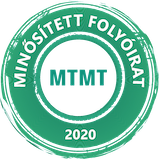The adoption of Hungarian family names; personal and place names in humour magazines in the period of the Tiszaeszlár Affair (1882–1883)
Abstract
The adoption of Hungarian family names; personal and place names in humour magazines in the period of the Tiszaeszlár Affair (1882–1883)
The paper analyses names that appeared in the pictures and in the texts of the humour magazines (a popular press genre of the era) published in the period immediately after the Tiszaeszlár Affair and the verdict of the Nyíregyháza court (from 28 May/4 June 1882 to 31 December 1883). Names were collected from the humour magazine Borsszem Jankó [‘Tom Thumb’], edited by Adolf Ágai, which aimed to convince its readers about the absurdity of the blood libel; and from Bolond Istók [‘Istók, the Fool’], edited by Lajos Bartók and Üstökös [‘The Comet’], edited by Endre Szabó, two anti-Semitic humour magazines. The author discusses how the magazines comment on name changes; the names of Israelite characters; German-sounding Jewish family names (several of which can be connected to the names of persons involved in the Nyíregyháza case), and how the names of the Israelites accused were the sources of humour and irony. It is noteworthy that the humour magazine authors referred to the persons involved with bynames, while also using fictitious toponyms. The volumes examined in the paper are not of interest for the sole reason that the adoption of Hungarian family names is a frequent topic in them, but also because names are the primarily source of humour and irony in the texts and caricatures. This was not typical of visual representations in the periods (the 1860s and the 1890s) discussed in previous studies by the same author.




